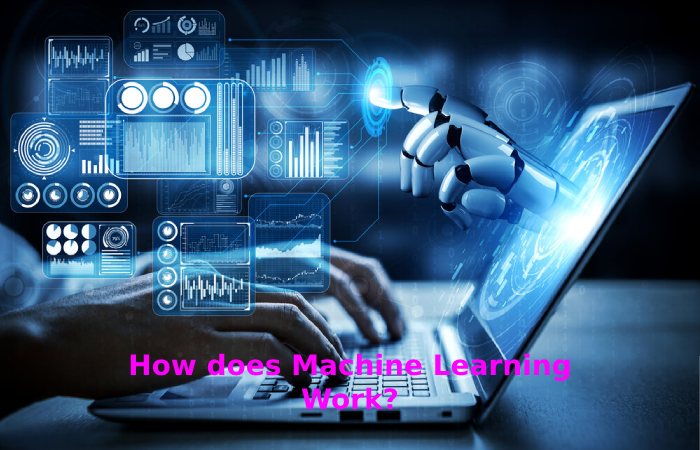Table of Contents
What is Machine Learning?
Machine learning is a sector of artificial intelligence that mentions the process by which PCs grow pattern recognition, or the ability to continuously learn and make guesses based on data, after which they make adjustments without being specially scheduled.
Whether or not you’re excited that artificial neural networks may one day be mature enough to replicate human consciousness, machine learning has undeniable practical benefits, including:
Smart Big Data Management
Without the speed and superiority of machine learning. It would be incredible to procedure and extract insights from the vast volume and variety of data generated as humans and other environmental forces co-operate with technology.
Smart Devices
From mobile devices pursuing health and wellness goals to self-driving vehicles and “smart cities” with an organization that can automatically decrease wasted time and energy, the Internet of Things (IoT) holds great promise, and machine learning can help make logic of this massive increase in data.
Enhanced Consumer Experience
Machine learning enables search engines, web applications, and other technologies to tailor results and also recommendations to match user preferences, creating exclusive, personalized consumer experiences.
How does Machine Learning Work?

Machine learning is highly complex and depends on the task and algorithm. A machine learning ideal is a PC that analyzes data and identifies patterns. Then uses that information to perform its assigned task better. Any task built on data points or rules can be automated using it. Even the most difficult tasks like answering customer service calls and reviewing resumes.
Depending on the situation, machine learning procedures work with more or less human intervention/reinforcement. The four main machine learning models are directed, unsupervised, semi-supervised, and assistive.
In supervised learning, the pc has a set of labeled data that it can use to learn how to perform a human task, and it is the least complex model attempting to reproduce human learning.
In unsupervised learning, the pc takes unlabeled data and extracts previously unknown information or patterns. There are many different possibilities for machine learning algorithms, including:
- Clustering, where the pc finds comparable data points in a data group and groups them accordingly (‘clustering’).
- Density estimation, where the pc discovers information by seeing how the data set is distribute.
- In anomaly detection, the PC identifies data points that differ significantly from the rest in a data set.
- Principal Component Analysis (PCA), in which the system analyzes and summarizes a set of data so it can be use to make correct predictions.
With semi-supervised learning, the PC has a set of partially labeled data and performs its task using the labeled data to understand the parameters and interpret the unlabeled data.
With reinforcement learning, the PC observes its environment and uses that data to identify the ideal behavior that will minimize risk or maximize reward. It is an iterative approach that requires some reinforcing signal to help the PC better determine the appropriate action.
How are Deep Learning and Machine Learning Connected?
Machine learning is the broadest group of algorithms capable of taking a set of data and using it to identify patterns, discover insights, or make predictions. Deep learning is a specialized branch of machine learning that takes the functionality of ML and pushes it beyond its capabilities.
There is some human involvement in it. As engineers can examine the results of an algorithm and adjust the accuracy. Deep understanding was not found in this review. Instead, a deep learning algorithm uses its neural system to check the exactness of its results and then studies them.
The neural network of a deep learning algorithm is an organization of layer algorithms design to mimic the human brain. Therefore, the neural system learns to improve over time without feedback from the engineers.
How Maps Bring Machine Learning Profits Across Enterprise Applications?
It is one of the things that makes a company strong, flexible, and resilient. Innovative companies choose ML to drive top-down growth, employee productivity, and also customer satisfaction.
Many companies are successful with specific ML use cases, but that’s just the beginning of the process. While machine learning experimentation is paramount, the integration of machine learning models into business processes and applications should soon follow so they can also scaled across the industry.
Many organizations lack the skills, processes, and tools to achieve this level of business integration. To achieve ML success at scale, companies should consider investing in MLOps. Which includes the process, tools, and technology to streamline and standardize. Every phase of the ML lifecycle, from model development to go-live. The emerging field of MLOps seeks to bring agility and speed to the ML lifecycle. It can be link to what DevOps has done for the software development life cycle.
Conclusion
It is a research area dedicate to understanding and developing methods that “learn,” i.e., H. Methods that use data to improve performance on specific tasks. It is consider part of artificial intelligence.

![Machine Learning Simplified: Key Concepts Explained [2023]](https://www.webcomputertech.com/wp-content/uploads/2022/09/Machine-Learning.webp)